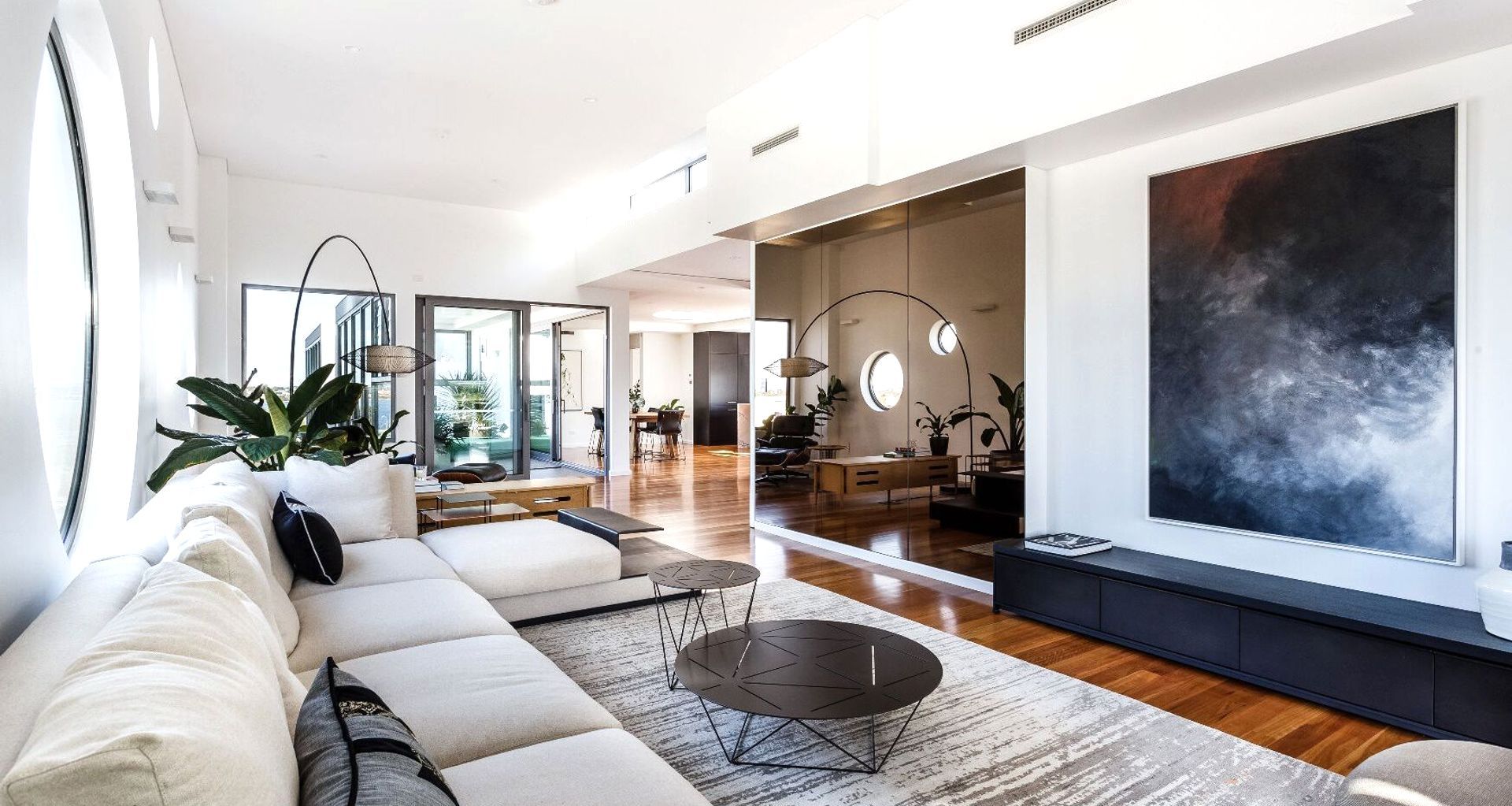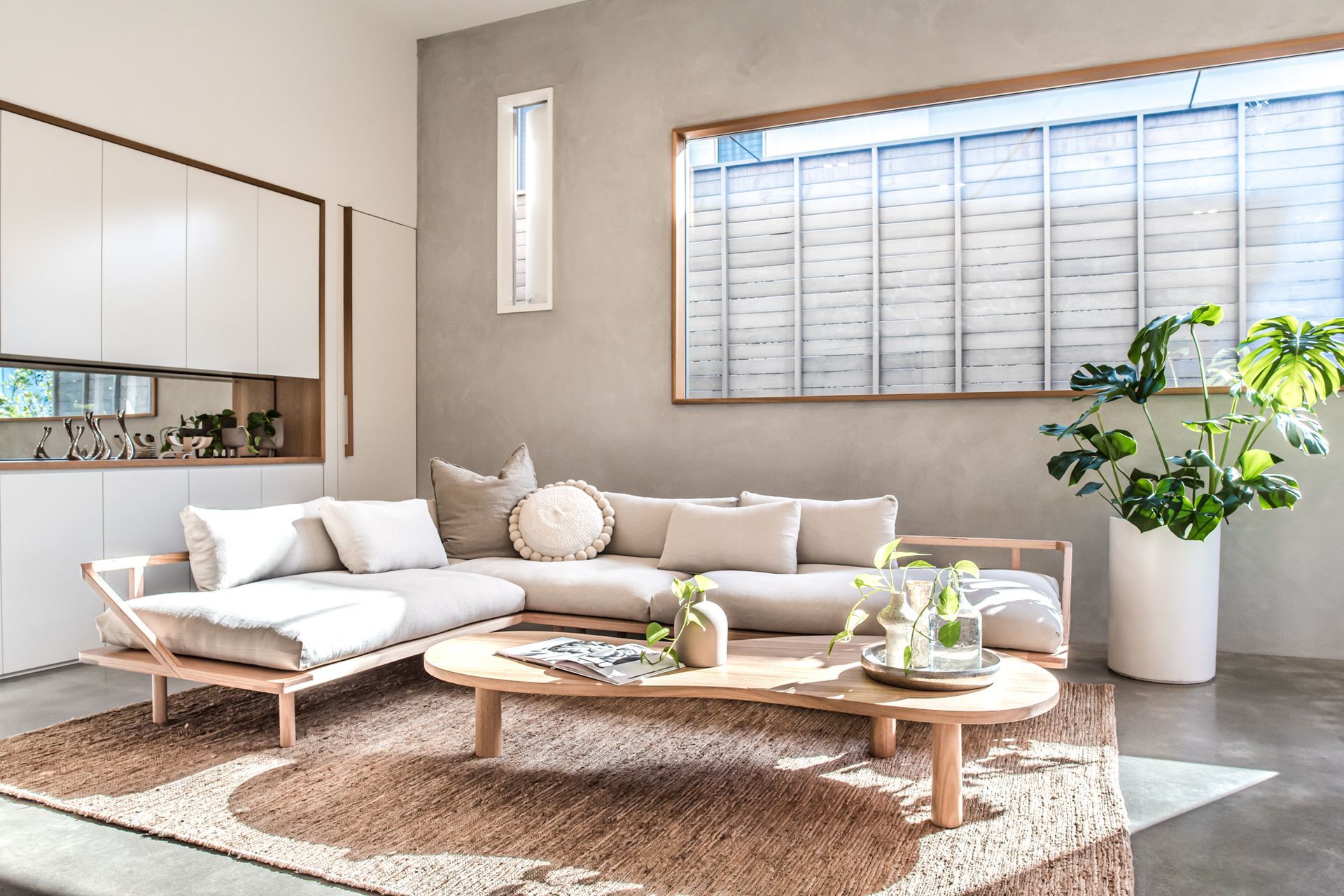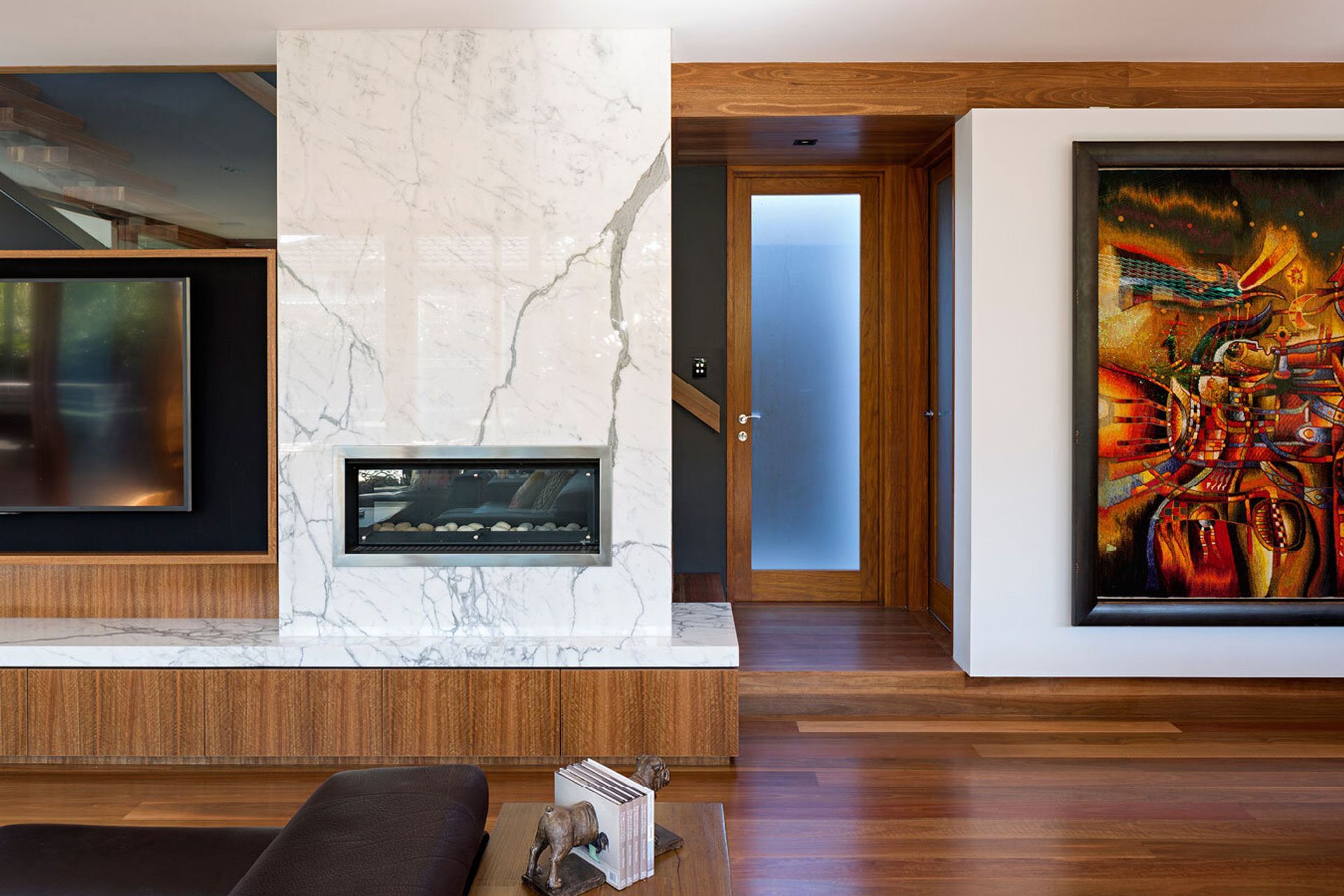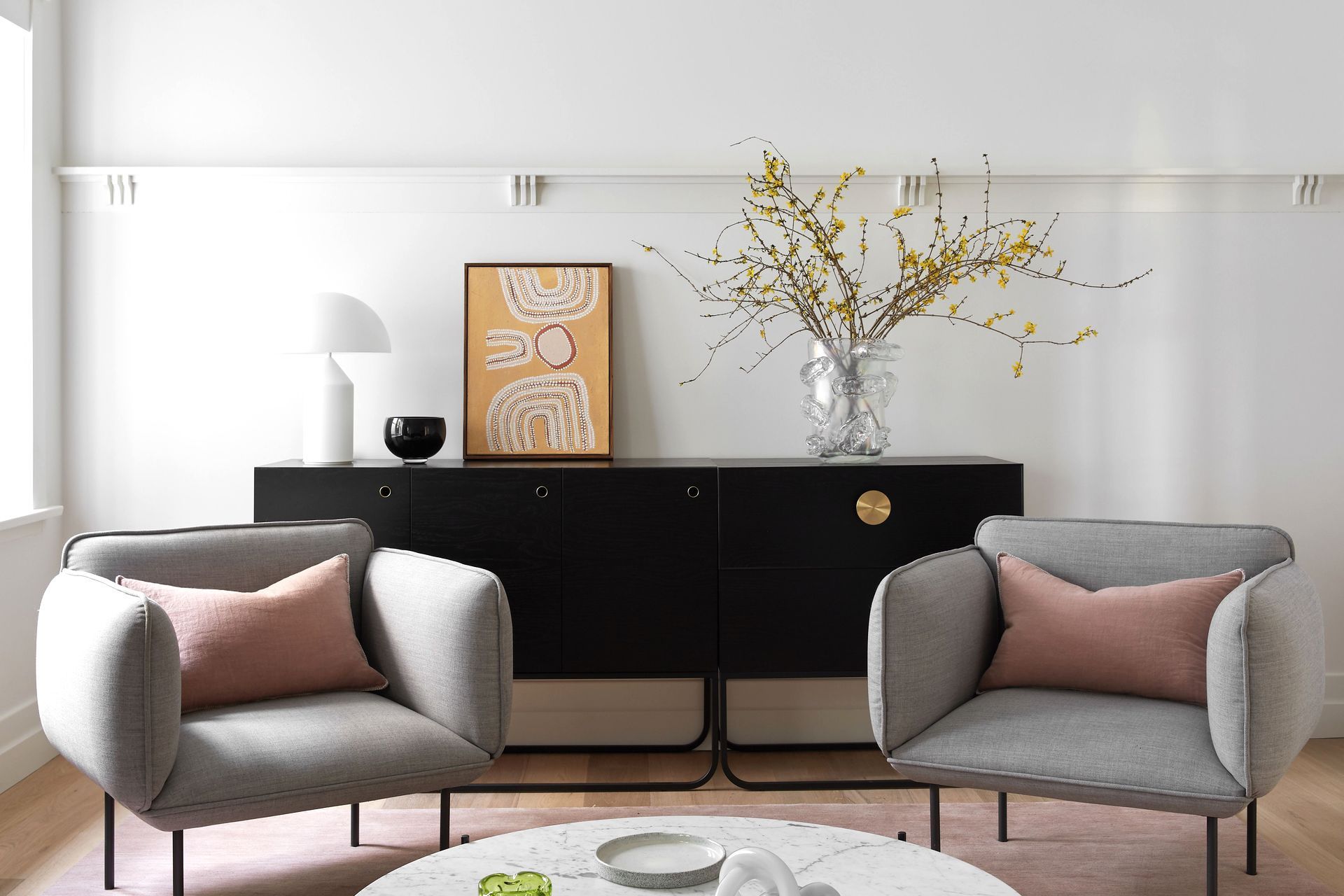Complete guide to contemporary home decor

Finding design inspiration and implementing it is an extremely challenging process. Understanding the core fundamentals of modern interior design can help transform a space from cluttered and gloomy to clean and inspirational. Contemporary home decor can be an essential part of this and we unwrap what it is and how to make the most of it.

What does contemporary home decor mean?
Contemporary home decor refers to a style of items that are modern with current fashion trends. Contemporary interiors are sleek and new because they emphasise colour, space, and shape, just like a lot of contemporary art does.
Its simplicity, subtle elegance, deliberate use of texture, and clean lines characterise a contemporary decorating style. The focus of most interiors is on space rather than objects, but the play between the two can be powerful, especially when we consider some key design ideas.
While "modern" interiors have a reputation for being stifled or too minimalist, they are spaces that have the potential to be incredibly warm and welcoming. Today's more modern and contemporary styling works well in retail, loft apartments and classic residencies as well as businesses of all creeds.
Use of colour
The most commonly associated colours in contemporary home decor are black, white, and neutral tones. In contemporary rooms, black is often used to cement or ground space. It also gives room for further definition.
Bright and vibrant colours that contrast well with neutrals are often used to emphasize or spice up the colour palette, though if we paint a wall in a bright, strong colour, it's best to use neutrals throughout the rest of the room. With walls painted in a more neutral or basic tone, like ivory, beige, taupe, and shades of white make for a prime backdrop for bold wall accessories.

Lines and space
Strong, visible lines are the foundation of any contemporary style home. They are also the clearest and most distinctive features of contemporary interior design, whether they're straight lines or curved, vertical or horizontal. Some other examples of interesting line and space uses are:
- Architectural elements
- Vivid colour blocks
- High ceilings
- Naked windows
- Geometric shapes in wall art
- Large abstract sculptures
Use structural factors to your advantage. We can't always avoid the technical aspects of a home, but we sure can make them look good. Suspend your air ducts, expose your brick-work, and paint exposed plumbing. These can all create powerful lines. Alternatively, blend them back in with the walls to minimise their relevance.
Related article: Understanding the unique world of bespoke art
Texture
If you're finding your space feels too cold or uninviting, you may need to embrace more texture. Material is a great way to bring a sense of cosiness to any space. Consider these:
- Wall textures
- Subtle patterns
- Geometric prints
- Materials like wood, marble, and velvet
For example, a living room may appear large and empty, but the addition of a thick wicker dining chair or a cotton shag rug can transform your space. Consider wood cabinets, linen cushions, or modest backsplashes in the kitchen. For finishings in kitchens and bathrooms, consider stainless steel or marble, and add wood and stone to build a warm environment.

Home furnishings
Furniture should make a statement without being too decorative or curvaceous. We aim for plain and uncluttered, but distinctive and cultured. Shapes that are smooth, clean, and geometric are crucial. We also want to look for natural fibres like wool, linen, cotton, jute, and silk to enhance the tactile appeal of upholstered furniture.
We would largely stick to neutral tones for furnishings and accentuate with pillows in simple but bold designs to bring colour and texture back into the room.
Ruffles, carved detailing, fringe, and floral designs should all be avoided. As a last rule, get rid of "cute and little" and replace it with simple, bare, bold, and substantial.
Flooring
Our flooring goals should be bare and smooth, leaning on the natural texture or wood, tile, or vinyl. Some homes even use polished concrete, which can make an incredible statement.
If you must have some carpet around, whether for sound control or warmth, use high-quality pieces that work with the room, accentuating the colour or texture as much as you can.

Lighting considerations
Consider using cove lighting or indirect lighting in both home renovations and new construction. Where you can, work with track or recessed lighting to illuminate your space. This enhances the glow of your space without too many visible light fittings, as these can make a space look cluttered.
Where you need light fittings, don't hedge, be bold with colour or metallic elements. Use can lighting or spotlights to illuminate artwork, posters, or print. These will aid in drawing attention to the pieces you wish to highlight while taking the focus away from the lights themselves.
Related article: 19 living room lighting ideas for Australian homes
Art and aesthetics
A modern home is synonymous with little to no clutter, so keep your wall and art choices limited. Where you want to put artworks, choose frames in high-gloss or matte black, natural wood, or metal finishes. If you want to combine many pieces of art, hang them close together, rather than spacing them out too much, as this can give the impression of one large piece of art.
Just remember, open space is often just as significant as the things you use to make a contemporary living room or study. Enjoy the work you put up and use it to highlight your personality and taste, but let it speak for itself.
Related article: How to choose wall art that works in your home

Other design elements
Generous use of metal, stone and opaque or transparent glass works nicely. Use richly textured textiles in basic hues for window treatments, pillows, or rugs to soften and warm up a space.
Plants and flowers should be large and dramatic and kept in simple containers. Place upward-focused lights around a huge plant on the floor if room allows. Arrange rocks or bark chips over the soil in the pots to keep the arrangements tidy.
You can even extend your contemporary charm to your dinnerware, and we highly recommend you do. There are many geometric forms, bright hues, and unique styles to choose from. And, if you're hosting, silverware, napkins, placemats, and centrepieces can all be used to add texture.
Design your dream home with contemporary home decor
As you can see, the fundamentals of contemporary home decor are easy to implement and simple to put in place. All it takes is an eye for space, colour, and form. If you don't have that, consider working with a designer or investing in pieces that speak for themselves in that way.
